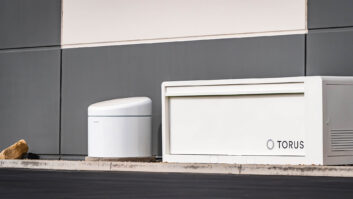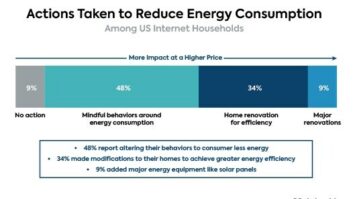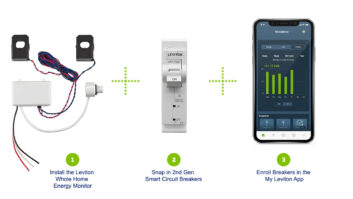Helping Your Green-Conscious Clients Find An Energy Specialist
When discussing switching out amps and TVs for more energy-efficient gear, modifying a control system with custom programming for energy management, or adding alternative energy solutions, most clients will first want to establish a baseline or point of reference for their current energy consumption problems by performing a comprehensive energy audit. Presuming that most electronic systems contractors don’t have the instrumentation or knowledge to conduct the necessary tests and the tools to analyze these results in-house, I’d recommend that you partner with a home-performance specialist in your area.
A quick Google keyword search for home or building performance contractors (or consultants) or energy audits, along with your city name, will turn up plenty of potential partners to investigate. Some states even have building-performance contractor associations. Do your research, interview the top candidates, and select a professional

Recommendations made in the home energy audit
report should point to the substantial amount of
energy efficiency and savings that would come
from work proposed and performed by your firm. energy audit partner who can assist in providing this valuable service. Who knows? Maybe your new partner will bring you some business in return.
To assist you in evaluating and selecting an energy audit partner, it will help to have a blueprint of how professional energy audits are conducted. Energy audits generally involve four steps:
1. Energy Survey – Most auditors start with an energy survey that asks questions about the size, age, and construction of the house, number and age of residents, residents’ schedules, lifestyle, and energy-usage patterns, and details about the HVAC and other systems in the home. This survey may be conducted electronically, by phone, or in person. The auditor also will request energy bills from the past 12 to 24 months.
2.On-Site Energy Audit – This comprehensive onsite visit can take up to an entire day or more, depending on the size and complexity of the house, its construction, and the systems (HVAC, electrical and lighting, plumbing and pumping). The visit will include, (a) evaluating the building envelope and exterior by surveying building materials, insulation levels, exposures, fenestration, shading, and vegetation, and performing pressure and air-flow tests to assess and map air flow, leakage, and infiltration; (b) collecting, or preparing to collect, on-site data by taking measurements, nameplate data, and photos, obtaining hours of system and equipment operation, and installing monitoring and logging devices, and (c) assessing renewable energy potential by determining solar access for photovoltaic and/or solar thermal systems, determining prevailing local wind conditions, fuel cell options, geothermal potential and other cogeneration possibilities, and comparing electricity consumption versus potential energy production to optimize system size and minimize cost. The auditor may also contact various service providers and maintenance companies to learn more about the systems installed and their performance history.
3. Analysis and Simulation – Many auditors use simulation software to analyze the information collected in the energy survey, local weather information, and data from the resident’s energy bill. This evaluation and analysis tool produces charts and graphs detailing energy and cost breakdowns by equipment type and fuel (i.e., gas, electric).
4. Energy Report and Recommendations – Finally, the auditor should generate a report that presents the results of the

energy audit, benchmarks the energy consumption in the home to other homes of a similar size in the local area, and makes recommendations pertaining to energy savings, energy efficiency, and renewable energy options including anticipated ROI, utility incentives, rebate analysis, and paybacks.
The goal of this process is that the recommendations made in the audit report points to a substantial amount of energy efficiency and savings that would come from work proposed and performed by your firm.
Randy Stearns (randys@ engenv.com) is president of Alameda, California-based Engineered Environments.






